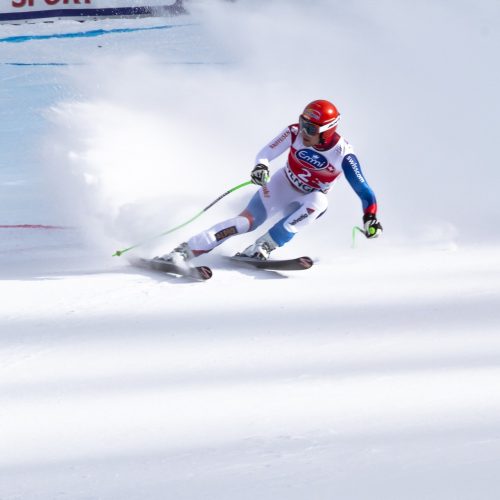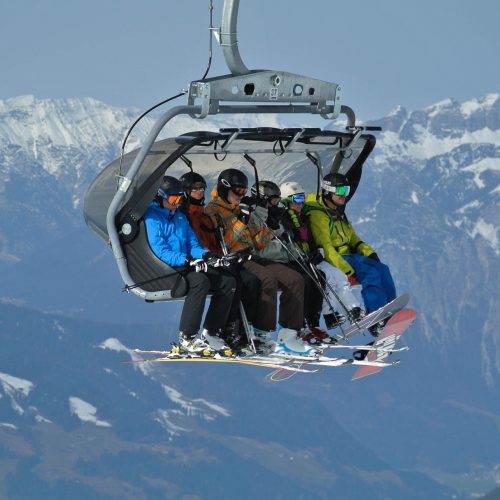
At high altitude, you are exposed to high levels of both ultraviolet and infrared radiation. These powerful rays of light can cause severe eye and skin problems if the necessary precautions are not taken. Good quality sun cream applied throughout the day will protect your skin and sports eyewear in the form of goggles, or sunglasses will protect your eyes.
The white snow reflects the bright sunlight, which increases the intensity of the glare. If your eyes are not well protected, this can lead to snow blindness. The effects of this vary from slight discomfort to severe pain and in some cases, it can cause loss of vision for a little while.
Goggles are normally worn to protect your eyes from the glare, UV light and cold winds.

Prescription Options
- You can have your prescription fitted directly into the frame and goggles
- You can also have an optical insert adaptor which has your prescription glazed into the frame or goggles
- You can be fitted with contact lenses and then wear your sunglasses or goggles over the top
Lens Guide
- Photochromatic lenses are beneficial in high mountains, as the climate can change very quickly
- Anti-reflective coatings can be applied to the front or back surface of the lens. This provides you with better clarity of vision
- Polarised filters can help reduce glare and reflection from the snow. This can be combined with brown, copper or amber tints, which helps reduce eye fatigue. However, skiers should not use dark polarised lenses, as this can cause total glare elimination, and make it more difficult to spot icy patches and small contours on the slope
- Mirror coatings are normally good for overall reduction in brightness, which is very good for skiing. Reflections are more noticeable on the back surface, so an anti-reflection coating is recommended
- Anti-fog treatment will repel the mist that can cloud your vision
- Oleophobic and Hydrophobic treatment will stop dirt and grease sticking to your lens maintaining distraction-free vision
- Impact resistance for all-round protection whilst skiing
- Lightweight for increased comfort
- Optical precision can be created as we can glaze your prescription into the lens or have an insert
- 100% UV protection advised
- Interchangeable lenses for different conditions
Tint Guide
GREY
- Good all purpose
- Minimises colour distortion
- Good choice for bright conditions
BROWN:
- Provides high contrast
- Good colour balance
- Helps the skier or snowboarder see the changing contours and textures of the snow’s surface
ORANGE/AMBER
- Good choice for partly sunny conditions
- Improves contrast on the snow, so that bumps and ridges can be seen easily
- Reduces glare
YELLOW
- Most effective in low light conditions or overcast days
- Superior increase contrast enhancement, by blocking blue light, bumps show up better
- Reduces glare
RED/ROSE
- Best for overcast or varying light conditions
- Improves contrast on the snow, so that bumps and ridges can be seen easily on the surface
Frame Guide
It is important the frames are lightweight and comfortable. They also should fit firmly on your face, so that you don’t worry about them slipping down.
- Lightweight
- Wrap-around style
- Adjustable nose pads
- Allow interchangeable lenses
- Adjustable temples
- Oversized frames with deep lenses offer the maximum peripheral vision
- Allow some airflow, as this will help prevent lenses from misting over
Goggles Guide
- Good peripheral vision
- Low-profile fit better with helmets
- Foam inserts to keep the cold wind out
- Wide head straps are more comfortable
- Anti-fogging lenses
- Ventilation system

